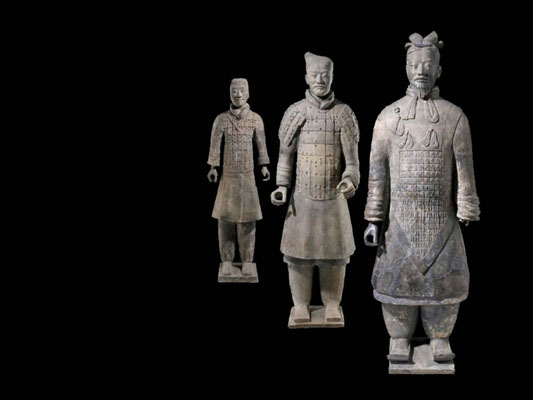In 1974 a farmer digging on the outskirts of present-day
Remarkable as they were, the terracotta soldiers turned out to be just the beginning of the find. They had been buried in a series of pits more than a kilometre away from a great tomb mound in the form of a square, flattened pyramid. They were the infantry, but there was also a cavalry division and numerous charioteers – more than a hundred have so far been excavated – riding in vehicles made of cast bronze. It soon emerged that the whole area was honeycombed with pits containing what amounted to a replica of the emperor’s entire world. Some contained acrobats, to entertain him in the afterlife. Others housed administrators and officials, while yet more were designed to stable his horses, which were killed and buried along with him and were discovered as a series of skeletons beneath the ground, each one tended by...


